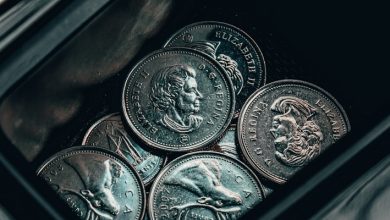How to Read Crypto Charts: Introduction to Technical Analysis

- How to Interpret Candlestick Patterns
- Understanding Support and Resistance Levels
- Introduction to Moving Averages
- Identifying Trends in Crypto Charts
- Using Volume to Confirm Price Movements
- The Importance of Timeframes in Technical Analysis
How to Interpret Candlestick Patterns
When reading crypto charts, one essential aspect to understand is how to interpret candlestick patterns. These patterns provide valuable insights into market sentiment and potential price movements. By recognizing and analyzing these patterns, traders can make more informed decisions about when to buy or sell.
Candlestick patterns consist of a series of bars that represent price movements over a specific time period. Each candlestick has a body and wicks, with the body showing the opening and closing prices and the wicks indicating the high and low prices during that period. By examining the shape, size, and color of these candlesticks, traders can identify patterns that signal potential reversals or continuations in price trends.
Some common candlestick patterns include Doji, Hammer, Shooting Star, Engulfing Pattern, and Harami. Each of these patterns conveys different information about market dynamics and can help traders anticipate future price movements. It is essential to study and familiarize yourself with these patterns to improve your technical analysis skills and enhance your trading strategies.
Understanding Support and Resistance Levels
Understanding support and resistance levels is crucial when it comes to analyzing crypto charts. Support levels are price points where a downtrend can be expected to pause or reverse due to a concentration of demand. Resistance levels, on the other hand, are price points where an uptrend can be expected to pause or reverse due to a concentration of supply.
Support and resistance levels can be identified by looking at historical price data on a chart. Support levels are typically found at significant lows where the price has bounced back up multiple times. Resistance levels, on the other hand, are usually found at significant highs where the price has struggled to break through.
When analyzing crypto charts, it’s important to pay attention to these support and resistance levels as they can help you make informed decisions about when to buy or sell. If the price of a cryptocurrency is approaching a support level, it may be a good time to buy as there is a high likelihood that the price will bounce back up. Conversely, if the price is approaching a resistance level, it may be a good time to sell as there is a high likelihood that the price will reverse.
Introduction to Moving Averages
Moving averages are a fundamental tool in technical analysis for interpreting price trends and potential reversals in cryptocurrency charts. By calculating the average price of an asset over a specific period, moving averages help traders smooth out short-term fluctuations and identify overall market direction.
There are two main types of moving averages: simple moving averages (SMA) and exponential moving averages (EMA). The SMA gives equal weight to each data point in the calculation, while the EMA puts more weight on recent prices, making it more responsive to current market conditions.
Traders use moving averages to generate buy or sell signals based on the crossover of different moving averages or the relationship between the price and the moving average. For example, a bullish signal occurs when the price moves above the moving average, while a bearish signal is triggered when the price falls below the moving average.
It is important to note that moving averages are lagging indicators, meaning they reflect past price data rather than predicting future price movements. However, they can still provide valuable insights into market trends and help traders make informed decisions when trading cryptocurrencies.
Identifying Trends in Crypto Charts
When it comes to reading crypto charts, identifying trends is a crucial aspect of technical analysis. Trends can provide valuable insights into the direction in which a particular cryptocurrency is moving. By analyzing price movements over time, traders can gain a better understanding of market sentiment and make more informed decisions.
One way to identify trends in crypto charts is to look for patterns such as higher highs and higher lows, which indicate an uptrend, or lower highs and lower lows, which indicate a downtrend. These patterns can help traders predict future price movements and adjust their strategies accordingly.
Another important aspect to consider when identifying trends in crypto charts is the concept of support and resistance levels. Support levels are price points at which a cryptocurrency tends to find buying interest, preventing it from falling further. Resistance levels, on the other hand, are price points at which a cryptocurrency tends to encounter selling pressure, preventing it from rising higher.
By paying attention to these key levels and observing how price reacts to them, traders can gain valuable insights into the strength of a trend and potential price reversals. Additionally, using technical indicators such as moving averages, Relative Strength Index (RSI), and Bollinger Bands can further help in confirming trends and making more accurate predictions.
Overall, understanding how to identify trends in crypto charts is essential for any trader looking to navigate the volatile world of cryptocurrencies successfully. By analyzing patterns, support and resistance levels, and technical indicators, traders can develop a more comprehensive view of the market and make better-informed trading decisions.
Using Volume to Confirm Price Movements
One of the key aspects of technical analysis when reading crypto charts is the use of volume to confirm price movements. Volume refers to the number of coins or tokens being traded during a specific period, such as an hour, day, or week. By analyzing volume along with price movements, traders can gain valuable insights into the strength or weakness of a particular trend.
High volume during an uptrend typically indicates strong buying pressure, suggesting that the trend is likely to continue. Conversely, low volume during an uptrend could signal that the trend is losing momentum and may be due for a reversal. In a downtrend, high volume can confirm a strong selling pressure, while low volume may indicate a weakening downtrend.
Traders often look for volume spikes, which can indicate significant market interest and potential price reversals. A sudden increase in volume accompanied by a sharp price movement can signal a possible trend change. On the other hand, if a price movement occurs on low volume, it may not be as reliable as a signal.
When analyzing volume, it is essential to consider the context in which it occurs. For example, comparing current volume to historical averages can provide valuable insights into market sentiment. Additionally, volume analysis can be used in conjunction with other technical indicators to confirm or refute potential trading opportunities.
The Importance of Timeframes in Technical Analysis
Understanding the importance of timeframes in technical analysis is crucial for interpreting crypto charts effectively. Timeframes refer to the duration of each candlestick or data point on a chart, which can range from minutes to months. Different timeframes provide varying levels of detail and insight into price movements, allowing traders to analyze trends and make informed decisions.
Shorter timeframes, such as one-minute or five-minute charts, offer a granular view of price fluctuations and are commonly used by day traders looking to capitalize on short-term movements. On the other hand, longer timeframes, like daily or weekly charts, provide a broader perspective on overall market trends and are favored by swing traders and investors.
By analyzing multiple timeframes simultaneously, traders can gain a comprehensive understanding of the market dynamics and make more informed trading decisions. For example, identifying a bullish trend on a longer timeframe can provide confirmation for entering a trade based on a shorter timeframe signal.
It is essential to consider the relationship between different timeframes and how they interact to form a complete picture of the market. Ignoring the significance of timeframes in technical analysis can lead to misinterpretation of chart patterns and false trading signals. Therefore, mastering the skill of analyzing timeframes is essential for successful trading in the cryptocurrency market.



